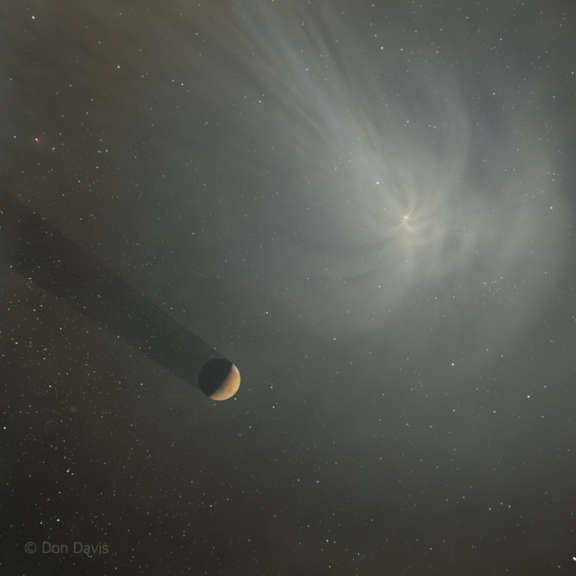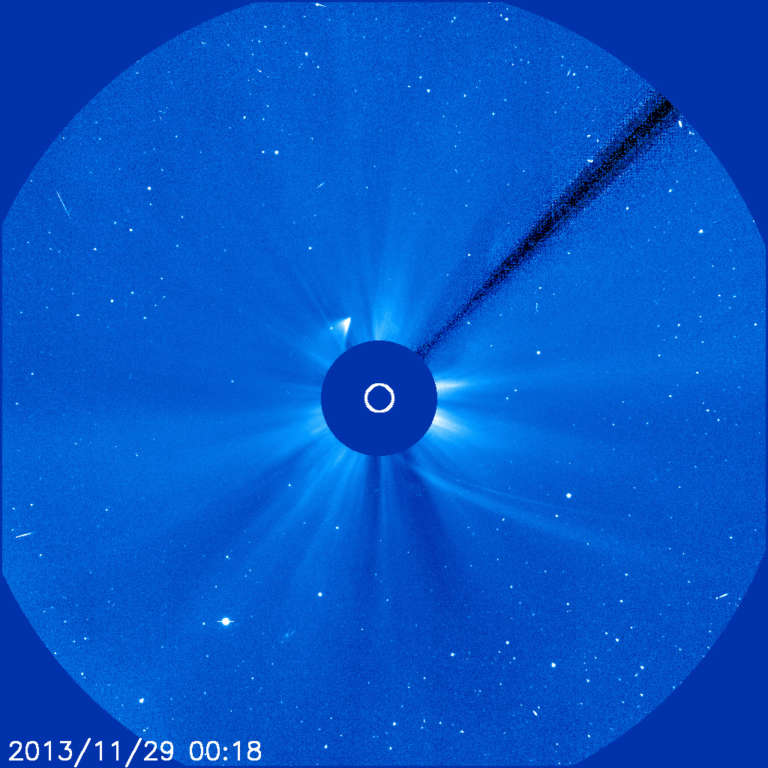All
All
Stories, updates, insights, and original analysis from The Planetary Society.
Hypervelocity Cratering and Riding Out the Risk
Today's update from the Mars Express team contains the realisation that, for some of the risks associated with October's Siding Spring flyby, there may not be much the team can do.
Space is really, really big – except sometimes it isn’t
Here's the next installment in the continuing story of how the Mars Express team is preparing for Comet Siding Spring flyby, 19 October 2014. This week: introducing the spacecraft's subsystems and structure – and wondering how we can absorb impacts.
Comet Siding Spring Mars encounter: Why orienting Mars Express is the heart of the challenge
Today's post continues where we started last week with an update from the Mars Express Flight Control Team at ESOC on their preparations for the 19 October Comet Siding Springs flyby. Today: defining the challenge!
Mars Express team readies for Siding Spring
On Sunday, 19 October 2014, at around 18:30 UTC, comet C/2013 A1 – known widely as 'Siding Spring' after the Australian observatory where it was discovered in January 2013 – will make a close fly-by of Mars.
A new comet observing campaign for C/2013 A1 (Siding Spring)
You thought you were rid of us...but we're back! Following the spectacular and, quite frankly unprecedented, success of the Comet ISON Observing Campaign, we are launching a similar venture for another unique cometary encounter that's happening this year. In October 2014, comet C/2013 A1 (Siding Spring) will pass extremely close to Mars.
Planetary Radio: NEOWISE PI Amy Mainzer
NEOWISE has reawakened to discover many more asteroids and comets. The mission leader thanks the amateur astronomers who follow up on these discoveries.
Planetary Radio: Comet ISON, Rest in Pieces
Karl Battams of NASA's Comet ISON Observing Campaign is our guest on this week's show. He explains how ISON really did become the comet of the century for scientists.
Comet ISON Wrap Up
Comet ISON captivated our world, and many of our world’s robotic emissaries for many months. But, alas, poor ISON is dead -- again. Here I wrap up our enthusiastic coverage of this multi-morphing zombie comet that tried to survive and re-survive as it came within one solar diameter of the Sun.
Comet ISON live blog
Comet ISON reached perihelion at 18:25 UT (10:25 PT) on November 28. It's an event that's was watched around the world, accompanied by tons of commentary and streams of photos. We will update this blog entry periodically with links to all the resources that we hear of for following the comet's progress.
Multiple views of comet ISON from solar-observing spacecraft
When comet ISON passed through perihelion last week, solar observing spacecraft had a ringside view. Here are several animations of ISON's perilous passage from the SOHO and two STEREO spacecraft.
Comet ISON Hangouts November 25 and December 2
Two Hangouts bookended comet ISON's perihelion, hosted by Chuck Beuter of Comet Festival South Bend. On November 25, it was I and Ron Kaitchuck. On December 2, Alex Filippenko and I discussed what happened to the comet over Thanksgiving.
Schrödinger's Comet
After impressing us yesterday, comet ISON faded dramatically overnight, and left us with a comet with no apparent nucleus in the SOHO/LASCO C2 images. As the comet plunged through the solar atmosphere, and failed to put on a show in the SDO images, we understandably concluded that ISON had succumbed to its passage and died a fiery death. Except it didn't. Well, maybe...
Comet ISON: Your Half-time Report
I am heading out to Kitt Peak to join my fellow CIOC-ers Matthew and Casey for perihelion observations of Comet ISON, and I find myself having an early moment of reflection.
ISON, Encke, Mercury, and Home
Comet ISON has entered the field of view of the STEREO HI-1A camera, and, in an awesome animation, it joins a large cast of characters already present there.
Comet ISON Enters the Final Countdown
We're now less than two weeks away from comet C/2012 S1 (ISON) reaching perihelion and, if we’re honest, we are still none the wiser as to how the situation might play out!
Cosmos with Cosmos Episode 4: Heaven & Hell
Humans face the consequences of our own knowledge about the cosmos in this latest episode recap and analysis of Carl Sagan's classic series.
Why does ISON look green?
You may have noticed that Comet ISON appears to have a green halo in some recent images, but in other images acquired at about the same time, it doesn’t. Thanks to the beautiful new spectrum posted earlier today by Christian Buil, it’s relatively easy to understand why.
DPS 2013: The fascination of tiny worlds
In which I summarize Joe Veverka's Kuiper Prize talk at the Division for Planetary Sciences meeting:
An early look at Comet ISON
Comet ISON is brightening as it approaches the Sun, and can now be seen from many ground-based telescopes.
Cometary Science at EPSC
Recently, almost a thousand researchers gathered in London for Europe’s annual meeting of planetary scientists. Here's a report from one session on cometary science.


 Explore Worlds
Explore Worlds Find Life
Find Life Defend Earth
Defend Earth


 Sun
Sun Mercury
Mercury Venus
Venus Earth
Earth Mars
Mars Jupiter
Jupiter Saturn
Saturn Uranus
Uranus Neptune
Neptune Small Bodies
Small Bodies












